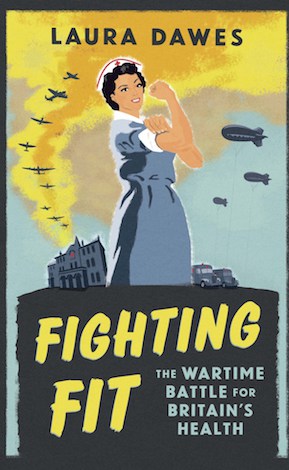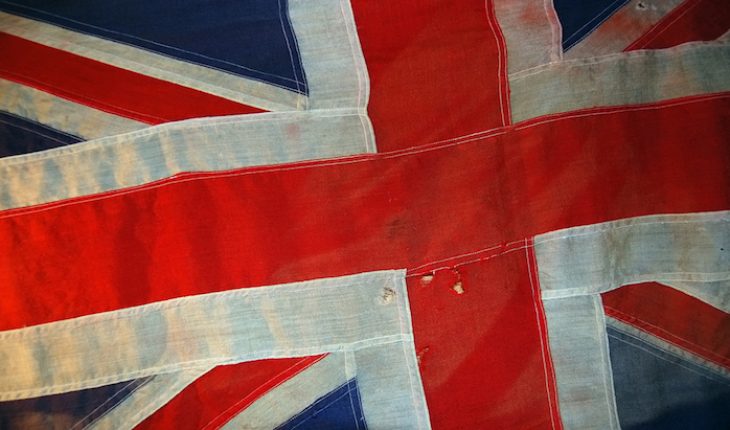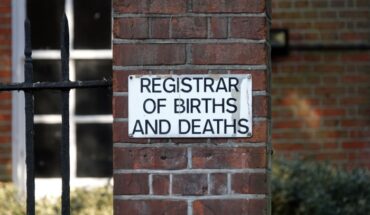Rebecca Wallersteiner reviews ‘Fighting Fit’ a new World War II Medical History Book, by medical historian Laura Dawes – which explores how the nation’s health improved during England’s darkest hours
At the beginning of the Second World War, medical experts predicted epidemics of physical and mental illness on the home front. Rationing would decimate the nation’s health, they warned; drugs, blood and medical resources would be in short supply; air raid shelters and evacuation would spread infectious diseases. Their reports worried Winston Churchill who feared that thousands of British people would succumb to illness, starvation or psychiatric breakdowns, causing mental hospitals to overflow – but he need not have worried: Everyone pulled together changing their diets, and getting fitter – helping with harvests, farming, construction and fire-watching and improving their hygiene. The wartime government intervened in health and home life to an extent not seen before, nor since – as medical historian Laura Dawes writes in her in her fascinating new book on government health policies during World War II, based on her research into the archives of the era, including the National Archives, Wellcome Collection, Kew Gardens Archives and The British Library. A combination of meticulous planning and last minute scrambling had succeeded in averting Churchill’s ‘dark curse on the nation’s health’ and everyone’s amazement, Britain ended the war healthier than ever before.
On 8th May 1945, Churchill stood on the balcony of a building housing the Ministry of Health in Whitehall and declared victory over Adolf Hitler to cheering crowds. The Ministry had played an important role in winning the battle. Churchill had worried that British imports of grain could be cut off by a German blockade and that the nation would starve. Before the war, Britain relied on importing around half of its meat and cheese from overseas and much of the protein in the British diet would be lost if shipping was blocked. The Ministry of Food, established when war broke out encouraged people to eat wholemeal brown bread which was packed with vitamins and minerals, rather than the popular over-refined white bread. To become more sufficient, people were encouraged to dig up their gardens and grow vegetables. Rosehips were used to make Vitamin C-rich syrup and people gathered wild nettles to boil for soup and kept egg-producing chickens. All this resulted in the nation becoming trimmer and fitter than ever before. Life expectancy increased and obesity, type II diabetes and heart disease rates all fell sharply. The Obesity Health Alliance recently suggested that around 40 million adults in the UK could be obese by 2035 – this certainly wasn’t the case during World War II.
It was thanks to the efforts of numerous individuals – doctors, nurses, scientists, psychologists, girl guides, nutritionists, fire wardens and farmers – who all pulled together to keep the nation fighting fit in wartime. Boy Scouts and conscientious objectors harvested seaweed to make agar gel to produce vaccines to protect children from diseases, like diphtheria. The government organised a national blood bank and deliveries were often made by local bakers and brewers. Even Walls ice -cream company lent its vans for delivering to London blood banks. Thousands of civilians volunteered as blood donors, and as guinea-pigs for medical tests. The government also overhauled and centralised the emergency services.
 Better health and extensive reforms not only helped win the war but led to the formation of the NHS in 1948 and the birth of the welfare state. With food rationed, yet more equally distributed the nation became healthier as a whole. However, it wasn’t all good news: 50,000 returning servicemen were pensioned out suffering from trauma and psychological damage. Numbers of VD cases rose over the course of the war, and climbed to their highest recorded peak three years after the war ended, only dipping slightly in the last year of the war. “Servicemen were taught protective options and were issued with ‘sheaths’ (condoms) and reassuring ‘Dreadnought’ ointment to rub on their penises after a compromising activity,” writes Daves. Rates of STD’s soared in the first years of peace when demobilised servicemen returned home. Thankfully penicillin had been invented (in 1945) to deal with both syphilis and gonorrhoea. Air pollution in England’s cities continued to be a problem: In 1948, 300 people, in London, were killed by a thick, smelly, yellowish pea-souper smog. London was often so foggy that people had to ask the way to the shops and tube station and couldn’t see friends they had arranged to meet at the bus-stop. Dense fogs continued to choke London’s streets well into the 1950s.
Better health and extensive reforms not only helped win the war but led to the formation of the NHS in 1948 and the birth of the welfare state. With food rationed, yet more equally distributed the nation became healthier as a whole. However, it wasn’t all good news: 50,000 returning servicemen were pensioned out suffering from trauma and psychological damage. Numbers of VD cases rose over the course of the war, and climbed to their highest recorded peak three years after the war ended, only dipping slightly in the last year of the war. “Servicemen were taught protective options and were issued with ‘sheaths’ (condoms) and reassuring ‘Dreadnought’ ointment to rub on their penises after a compromising activity,” writes Daves. Rates of STD’s soared in the first years of peace when demobilised servicemen returned home. Thankfully penicillin had been invented (in 1945) to deal with both syphilis and gonorrhoea. Air pollution in England’s cities continued to be a problem: In 1948, 300 people, in London, were killed by a thick, smelly, yellowish pea-souper smog. London was often so foggy that people had to ask the way to the shops and tube station and couldn’t see friends they had arranged to meet at the bus-stop. Dense fogs continued to choke London’s streets well into the 1950s.
Almost all serious infectious diseases declined considerably although people continued to take sickies off work now and again.
Although you may already be familiar with some of the stories in this well-researched book it is an entertaining and informative read.
Fighting Fit: The Wartime Battle for Britain’s Health, by Laura Dawes, published by Weidenfeld & Nicolson, published in July 2016 (hardback) Priced at £18.99p
- People’s Choice Victory for Down’s Syndrome Scotland Garden at Chelsea 2025 - 28th May 2025
- Cadogan: A Chelsea Family By Tamsin Perrett - 3rd May 2025
- Dream Worlds a new exhibition in Cambridge - 14th December 2024







